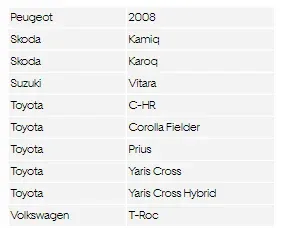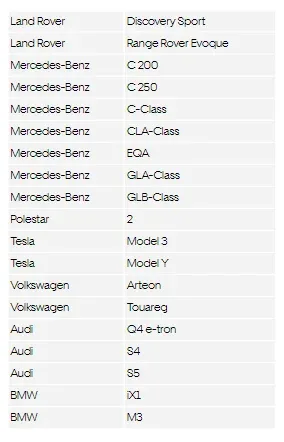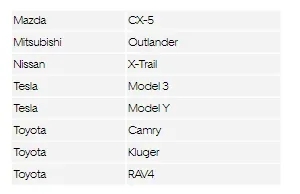Vehicle Eligibility Changes to Uber Comfort and Premier 09 Oct 2024
The following guide provides the updated Uber Comfort and Uber Premier vehicles in Australia. Uber Decided to remove the Hybrid cars from making Uber Green trips. The information on this page is for convenience purposes only.
UberX Drivers updated Car sheet Australia 2024
All vehicles must comply with the requirements on Uber’s vehicle requirements page for your area and for the ride options listed there. If a vehicle model appears here, but does not comply with the vehicle requirements for ride options in your area, that vehicle is not eligible to use in your area.
Vehicles being added to Uber Comfort
Vehicles will be eligible for Uber Comfort starting 9 November 2024

Vehicles being added to uber Premier
Vehciles will be eligible for uber Premier starting 9 Nov 24

Vehicles being removed from Uber Comfort
The following vehicles will not be eligible for Uber comforting after 9 Nov 24


Vehciles being removed from Uber Premier
Theses vehicles will be removed from doing Uber Premier Servies after 9 Nov 24


Popular Vehicles for Uber Comfort
Below is the list of eligible vehicles in Australia for doing Uber comfort trips.


Popular Vehicles for Uber Premier in Australia
Below is the list of mostly used cars for making Uber Premier Trips

Uber’s business model raises significant ethical concerns, particularly regarding its treatment of drivers and the exploitation of legislative loopholes in Australia. While the company boasts impressive profit margins, this success often comes at the expense of the very individuals who drive its operations: the drivers themselves.
One of the most troubling aspects of Uber’s policies is its classification of drivers as independent contractors rather than employees. This distinction allows Uber to sidestep various legal obligations, including minimum wage, paid leave, and benefits, effectively offloading risks onto drivers. By labeling drivers as third-party contractors, Uber can maximize profits while denying these workers basic protections that many Australians take for granted.
Furthermore, Uber’s reliance on a vulnerable workforce—often made up of individuals seeking flexible work or supplementary income—highlights a concerning power imbalance. Many drivers find themselves trapped in a cycle of underpayment, with high vehicle costs, insurance, and maintenance eating into their earnings. The company’s pricing strategies often prioritize customer satisfaction over driver welfare, leading to situations where drivers earn less than the minimum wage after expenses.
In addition, Uber exploits gaps in Australian legislation to maintain its dominant position in the market. Regulatory frameworks struggle to keep pace with the rapidly evolving gig economy, allowing companies like Uber to flourish while undermining labor rights. This exploitation raises broader questions about accountability and the responsibilities of companies that operate with such high profit margins.
In summary, while Uber continues to generate substantial profits, it does so by employing policies that leave drivers vulnerable and unprotected. The need for comprehensive regulatory reform is urgent, ensuring that all workers in the gig economy are afforded the rights and protections they deserve.
Uber keeps making Criteria strict for the drivers while making high revenue. Passengers on the other hand enjoy cheap fares, as No Union among the drivers in Australia. Till then Keep Fubering!!!
